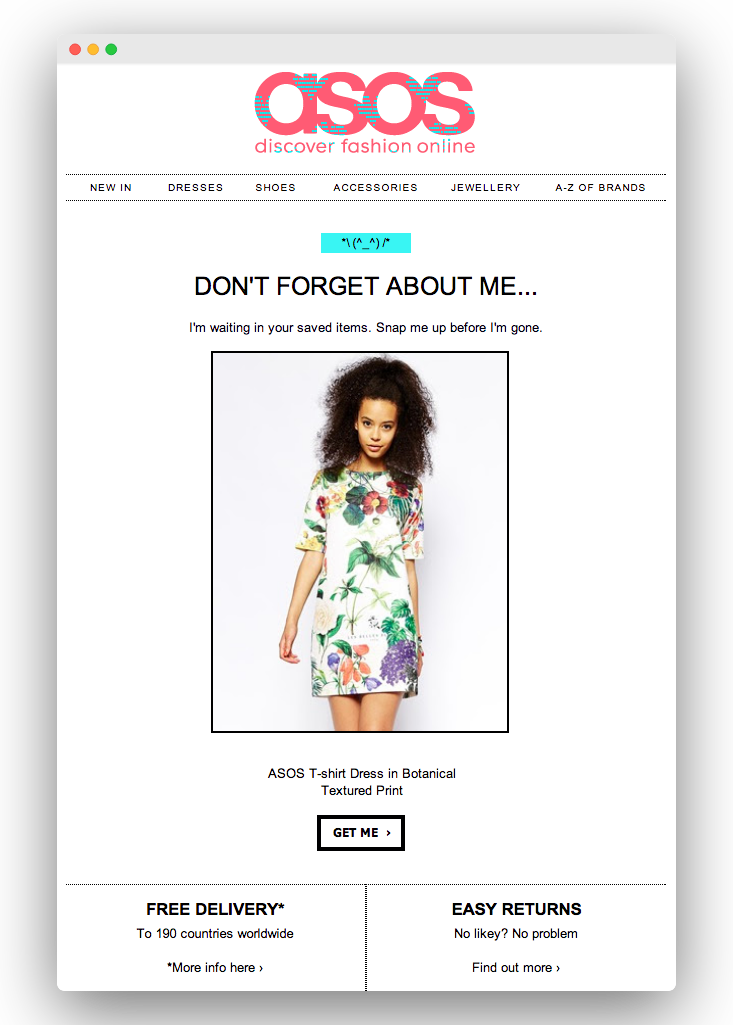Triggered emails are the ones that bring in the best returns. Plus, they generate strong engagement. All the more reason to look after them and not leave them unsupervised!
We write them, we configure them, and then we leave them to do their thing without worrying (too much) about them. Of the different emails that CRM managers and email marketers work on, triggered emails undoubtedly yield the most added value.
The proof lies in the fact that rankings of the different types of emails that brands send out, by revenue generated, clearly favor automated emails:
- Account creation
- Forgotten password
- Abandoned shopping cart
- Rewards programs
- Abandoned browse
- Product trigger.
In other words, six “triggered” or “service” emails came in ahead of promotional campaigns and newsletters, which did no better than seventh position for revenue per send.
READ NEXT > Triggered emails, Episode 2: Eight triggers under the microscope
Triggers: Strategic, but neglected…
Of course, this ranking should be taken with a grain of salt, at least toward the top of the list. If a lead creates an account or asks to be reminded of their password, they are probably already close to making a purchase.
Design, testing and maintenance: Marketers tend to focus less on triggers
Rarely mentioned, on the other hand, is the fact that one-shot campaigns (like newsletters and special promotions) generate some of the fewest sales, when compared to the quantity of emails sent. And yet, we still place the most importance and take the most care with them…
Over and above revenue, real potential for engagement
If triggered email merit a placement at the top of CRM teams’ priorities, it’s not just because they bring in the most money. It’s also because they are powerful levers for engagement, for any brand or chain.
Triggered emails are the only ones that respond to actions by customers and leads. At a time when marketers only (and rightfully!) swear by interactive tools, you don’t want to let this opportunity to engage in dialogue slip through your fingers. It is a real opportunity to respond to requests from loyal customers, customers in need of reinvigoration and “pure” leads, with whom you are having your first contact.
Have we convinced you? Well then, here are some tips and good practices to allow you to make your triggers shiny and new again.
Triggered emails: Some general rules
Design: Be consistent
There is no reason to treat triggered emails (or service emails, for that matter) any differently from newsletters and other promotional messages. Content, tone and visuals: consistency in communications, regardless of the reason for the message, is actually a real factor in brand recognition.
So, all of the emails you send (triggered and otherwise) should be coherent with the user experience offered on the brand’s websites and applications. And that user experience should be similar, whether the operation is aimed at up-selling or a post-purchase process, a special offer under the customer rewards program, or the weekly newsletter. Make sure to harmonize the following, in particular:
- The contents and composition of the menu
- The direction/order in which the different content blocks will be read
- Account and contact information
- CTAs
Accessibility and readability: Be (even more) meticulous
For retailers, even more so than for other players, the use of “mobile-first” triggers is no longer optional. Mobile email statistics have shown that this is probably the #1 channel for drive-to-store strategies.
“Light-weight” content, designed to be readable in as many environments as possible (webmail, email client, mobile device, etc.) and to display quickly, is even more of a strategic issue for triggers than for other emails: the closer you are to a sale, the more speed counts…
So, pay special attention to these when designing your triggered emails:
- the file sizes of your media
- the font size you are using
- the placement of the CTAs
- and, generally speaking, the “cleanliness” of the HTML code.
Readability, tone and design: major international brands like Starbucks and Asos take great care in designing their triggered emails.
Life cycle: Check under the hood twice a year
It is no secret to say that the rules applied by different ISPs, email clients and, in short, the 15,000 or so configurations in which emails are read, are always changing. Often without any warning. So, it is important to perform regular checks, to ensure that they still display correctly, at least in the most common email-reading contexts.
What do we mean by “regular”? Twice a year would be ideal for solid maintenance, without going overboard. After all, a key advantage of a triggered email is that it has a longer-than-average lifespan…
You can also take advantage of a review of your trigger code to reformulate its subject line. For example, it can take relatively little to improve your reputation among ISPs and enjoy better placement in your recipients’ inboxes.
Commercial pressure and prioritization: Set rules for yourself
Up for debate is whether or not triggered emails should be included when calculating the marketing pressure you place on your recipients. There is no pat answer to this question, but you should at least consider the question!
If only because it will lead you to an even more crucial choice: what weight and, therefore, what priority should you give to your triggers? For example, if you decide to include triggered emails in your measurement of commercial pressure, and to limit that pressure to a maximum of two emails per recipient, per week:
- Which email has top priority? Abandoned shopping cart, abandoned browse or post-purchase satisfaction survey?
- Which one comes next, and then third, fourth, etc., bearing in mind that the lowest priority is typically assigned to the generic “whole-database” newsletter?
- Finally, which ones are required and can be allowed over and above the acceptable level of pressure, on a one-off basis? Order confirmations and satisfaction surveys often fall into this category.
As part of a marketing automation strategy, assigning weights to your triggered emails can considerably simplify the development of effective scenarios. And, for advertisers who may have rolled out up to 200 triggered emails, clearly prioritizing them is simply a must.
Most of these rules can be applied to all of your triggered emails. However, each trigger has its own special features, objectives (business, engagement or both) and, therefore, its own set of good practices. We tackle this subject in Episode 2 of this series devoted to triggered emails, “Eight triggers under the microscope”!
About the author: Marie Loisel
Marie has 15 years of experience working in connected commerce (first at La Redoute and then at Boulanger). In those positions, she worked on CRM issues, but also on customer engagement (from customer knowledge to brand content).
To confer with her and/or ask for her expertise, you can write to her or find her on LinkedIn.









Aucun commentaire pour l'instant